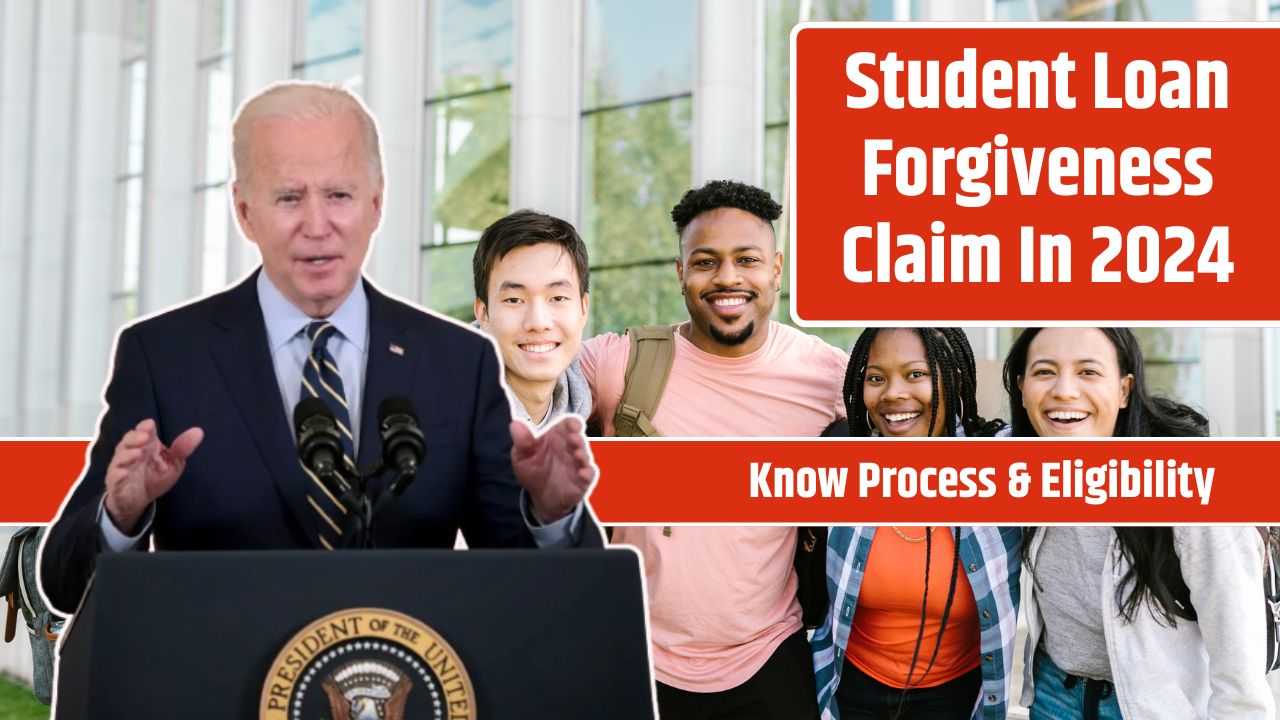The U.S. government’s Student Loan Forgiveness program is designed to reduce the financial strain on millions of borrowers, offering updated repayment options and clearer eligibility criteria.
With new guidelines introduced by the Department of Education, significant changes are now in place, including adjustments to repayment plans, loan consolidation options, and expanded eligibility for loan forgiveness.
These updates are particularly beneficial to low- and middle-income families, helping them better manage student debt. Here’s a comprehensive overview of the key changes and what borrowers can expect.
Student Loan Forgiveness: New Guidelines
The Department of Education’s updated Student Loan Forgiveness program emphasizes more manageable repayment terms and faster routes to loan forgiveness. Key initiatives like the income-driven repayment (IDR) plans and direct loan consolidation aim to simplify and ease debt repayment.
One of the major highlights is the federal SAVE (Saving on a Valuable Education) plan, which recalculates monthly payments based on income. Borrowers enrolled in SAVE will see these recalculations starting in August 2024, with the conclusion of forbearance.
Repayment and Consolidation Changes
Changes to income-driven repayment (IDR) plans and loan consolidation offer more manageable monthly payments, especially for borrowers with low income.
Key Changes to Repayment Plans
- Income Threshold: Borrowers earning less than $32,800 (individual) or less than $67,500 (family of four) may qualify for reduced payments.
- Reduced Payment Percentage: The payment rate for undergraduate loans will drop from 10% to 5% of discretionary income starting in July 2024.
- Loan Forgiveness Timeline: Borrowers with loan balances of $12,000 or less will have their remaining balance forgiven after 10 years of payments, a reduction from the previous 20-25 year requirement.
Direct Loan Consolidation
Direct Loan Consolidation allows borrowers to combine multiple federal student loans into one. Benefits include simplified payments and access to loan forgiveness programs. A key advantage is that the interest rate on a consolidated loan remains fixed, providing stability. However, borrowers should weigh potential downsides, such as the loss of certain benefits tied to their original loans, before consolidating.
Student Loan Forgiveness Eligibility
The updated guidelines aim to benefit about 30 million Americans, but not everyone qualifies. Here are the main eligibility criteria:
- Pre-2005 Borrowers: Borrowers who entered repayment before July 1, 2005, or those with graduate debt before July 1, 2000, may qualify for forgiveness.
- Income Levels: Those from low- and middle-income families facing financial hardship are more likely to be eligible.
- Institutional Quality: Borrowers who attended programs or institutions that failed to provide adequate educational value might also qualify for forgiveness.
Eligibility can vary by individual circumstances, so it is important to check the official government website for the most up-to-date information.
How to Claim Student Loan Forgiveness
To apply for Student Loan Forgiveness, follow these steps:
- Submit an Application: Borrowers must submit a formal application to their loan servicer. Those applying for Public Service Loan Forgiveness (PSLF) should also submit their PSLF certification.
- Annual Certification: Borrowers in the PSLF program need to submit the PSLF form annually, and a final form after completing 10 years of service, certified by their employer.
- Proof of U.S. Citizenship: Only U.S. citizens are eligible for the program.
- Submit Documentation: Required documents include proof of employment, income, and any other information that may be necessary for verification.
Additional Loan Forgiveness Programs
In addition to the general Student Loan Forgiveness program, there are sector-specific programs available:
- Teacher Loan Forgiveness: Full-time teachers who have worked for five consecutive years in a low-income school may qualify for loan forgiveness.
- Nurse Corps Loan Forgiveness: Registered nurses who work in high-need areas are eligible for forgiveness through this program.
- IDR Loan Forgiveness: Borrowers enrolled in income-driven repayment plans can have their remaining balance forgiven after 20 to 25 years of consistent payments.
Impact of the Recent Updates
The changes introduced by the Department of Education provide significant relief for millions of borrowers. With new repayment options, such as lower monthly payments and shortened loan forgiveness timelines, student debt is becoming more manageable for many Americans. Additionally, targeted forgiveness for specific professions like teachers and nurses helps reduce financial burdens in key sectors.
Staying Updated
Borrowers are encouraged to keep up with changes by regularly checking the official government website for updates on loan forgiveness programs and repayment plans. The Department of Education frequently updates information regarding the PSLF and SAVE programs, ensuring borrowers have access to the latest resources and benefits.
FAQs:
Who qualifies for the new Student Loan Forgiveness program?
Borrowers who entered repayment before July 1, 2005, those with graduate debt before July 1, 2000, and individuals from low- and middle-income families are among those who may qualify.
What changes have been made to income-driven repayment (IDR) plans?
Changes include lowering the payment rate from 10% to 5% of discretionary income for undergraduate loans and shortening the loan forgiveness timeline for those with balances under $12,000 to 10 years.
How does direct loan consolidation work?
Direct Loan Consolidation allows borrowers to combine multiple federal student loans into one loan with a fixed interest rate. This simplifies repayment and can lead to lower monthly payments.











